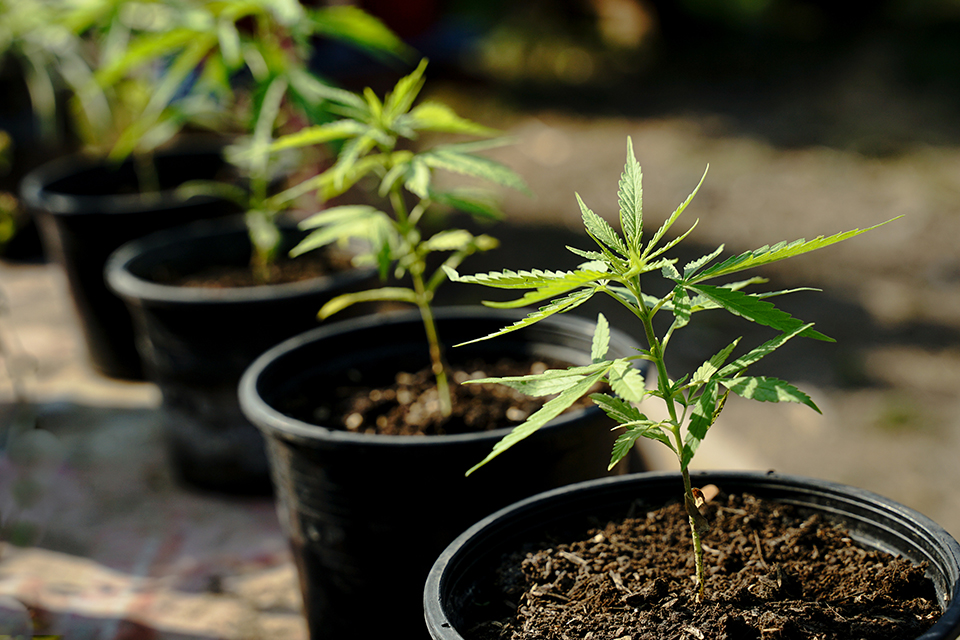
Transplanting cannabis seeds enables the cultivation of healthy plants, especially for home growers in the USA. As more people take up home cultivation, knowing the steps to transplanting cannabis seeds properly can lead to better growth and higher yields. There are practical techniques you can use to help you avoid common pitfalls like root damage and stunted growth, ensuring your plants thrive.
Kind Seed Co is dedicated to offering expert advice to support your cultivation journey. Whether you're new to growing or have experience, we will enhance your home-growing success.
When to Transplant Cannabis Seeds
Timing your transplant is key to ensuring your cannabis plants thrive. Look for signs that your seedlings are ready to move, such as a well-developed root system and when they start to outgrow their containers. Typically, this happens once they have three to four sets of true leaves and roots peeking out from the bottom.
Transplanting too early can stress young seedlings while waiting too long can lead to root-bound plants struggling to absorb nutrients. To avoid transplant shock, choose a mild time of day for the move and have the new environment ready. This careful timing helps prepare your plants for healthy growth and better yields.
Selecting the Right Soil and Container
A good soil mix provides essential nutrients and ensures proper drainage to avoid root rot. Look for a mix designed for cannabis, often containing peat moss or coco coir for organic matter, perlite for aeration, and sometimes extras like worm castings or bat guano. Aim for a pH between 6.0 and 7.0, as cannabis plants prefer slightly acidic to neutral conditions.
Choose the right container. Ensure it has enough drainage holes to prevent water buildup, which can harm roots. Container size also matters. Too small, and roots can't grow properly, limiting nutrient and water access. Too large, and there's a risk of overwatering. Generally, a pot of three to five gallons is ideal for allowing roots to expand.
Step-by-Step Guide to Transplanting Cannabis Seeds
Transplanting cannabis seedlings requires a careful approach to ensure they thrive. Here's how to do it right:
- Water the seedlings: A few hours before you plan to transplant, give your seedlings a good watering. This keeps the soil together and eases the stress on the roots.
- Prepare the new container: Fill your new pot with a suitable soil mix, leaving room for the seedling. Create a hole in the center, slightly larger than the root ball, to fit the seedling comfortably.
- Gently remove the seedling: Turn the current pot upside down while supporting the plant with your hand. Tap the bottom gently to loosen the soil and roots. Avoid pulling the plant to prevent root damage.
- Inspect the roots: After removal, check the roots for health. They should be white and strong. If they're circling the root ball, gently spread them out to promote outward growth.
- Place the seedling in the new pot: Position the seedling in the hole, keeping the root ball at the same depth. This consistency helps reduce transplant shock.
- Fill and firm the soil: Fill in the soil around the seedling, pressing it down lightly to remove air pockets. Ensure the soil isn't too compact, allowing roots room to grow.
- Water thoroughly: Water the seedling well to settle the soil and provide hydration. Make sure the pot drains properly to prevent waterlogging.
- Adjust light and environment: Place the seedlings in a spot with suitable light levels after transplanting. Avoid direct sunlight at first to prevent stress, gradually acclimating them to their new surroundings.
Successful Transplants for Successful Cannabis Cultivation
Transplanting cannabis seeds properly is crucial for any home grower aiming for success. You lay the groundwork for thriving plants and abundant yields by mastering timing, preparation, and careful handling. These techniques boost your cultivation efforts and reinforce Kind Seed Co's role as a trusted resource for cannabis cultivation. Embrace these practices to elevate your home-growing experience and achieve the best results.







